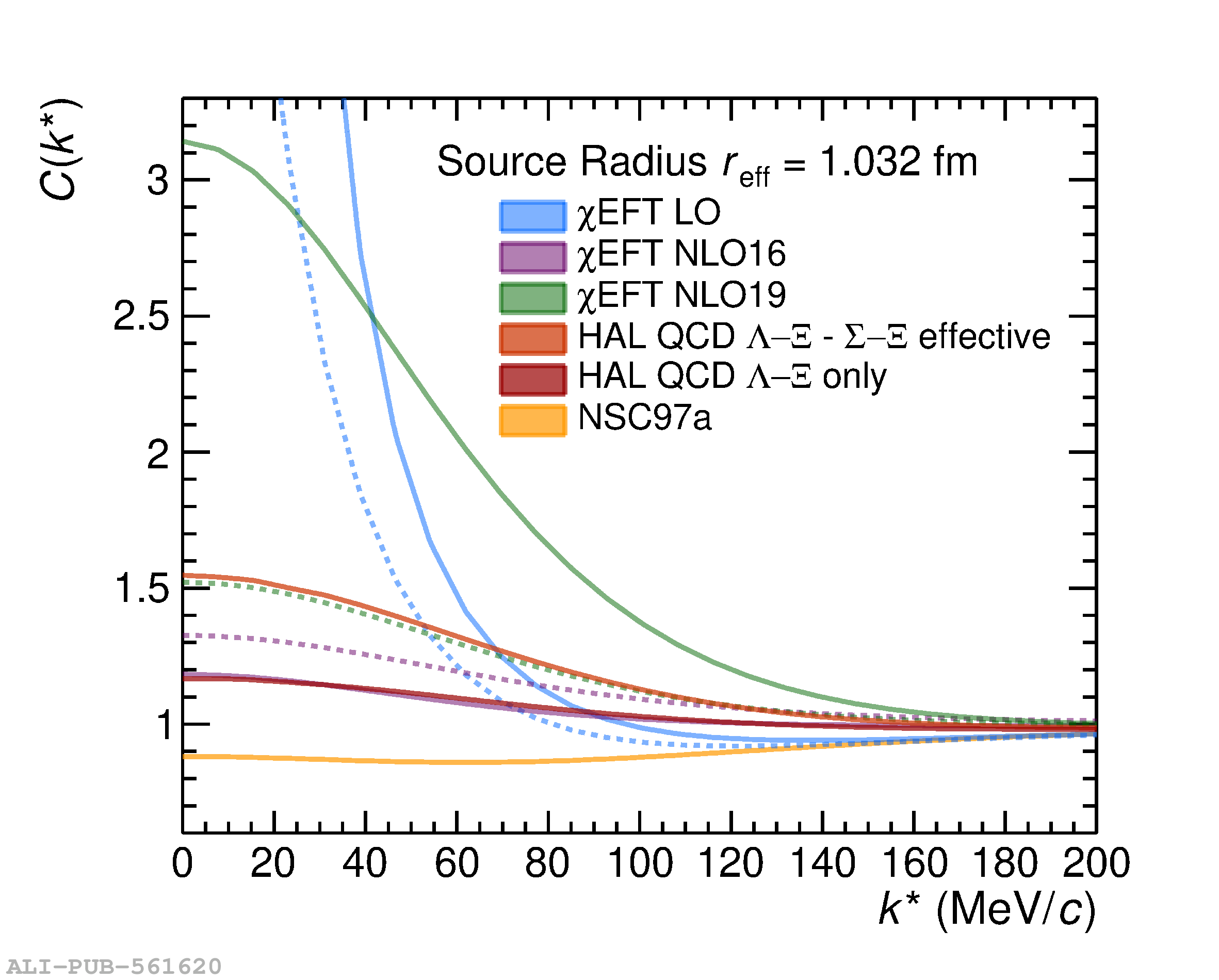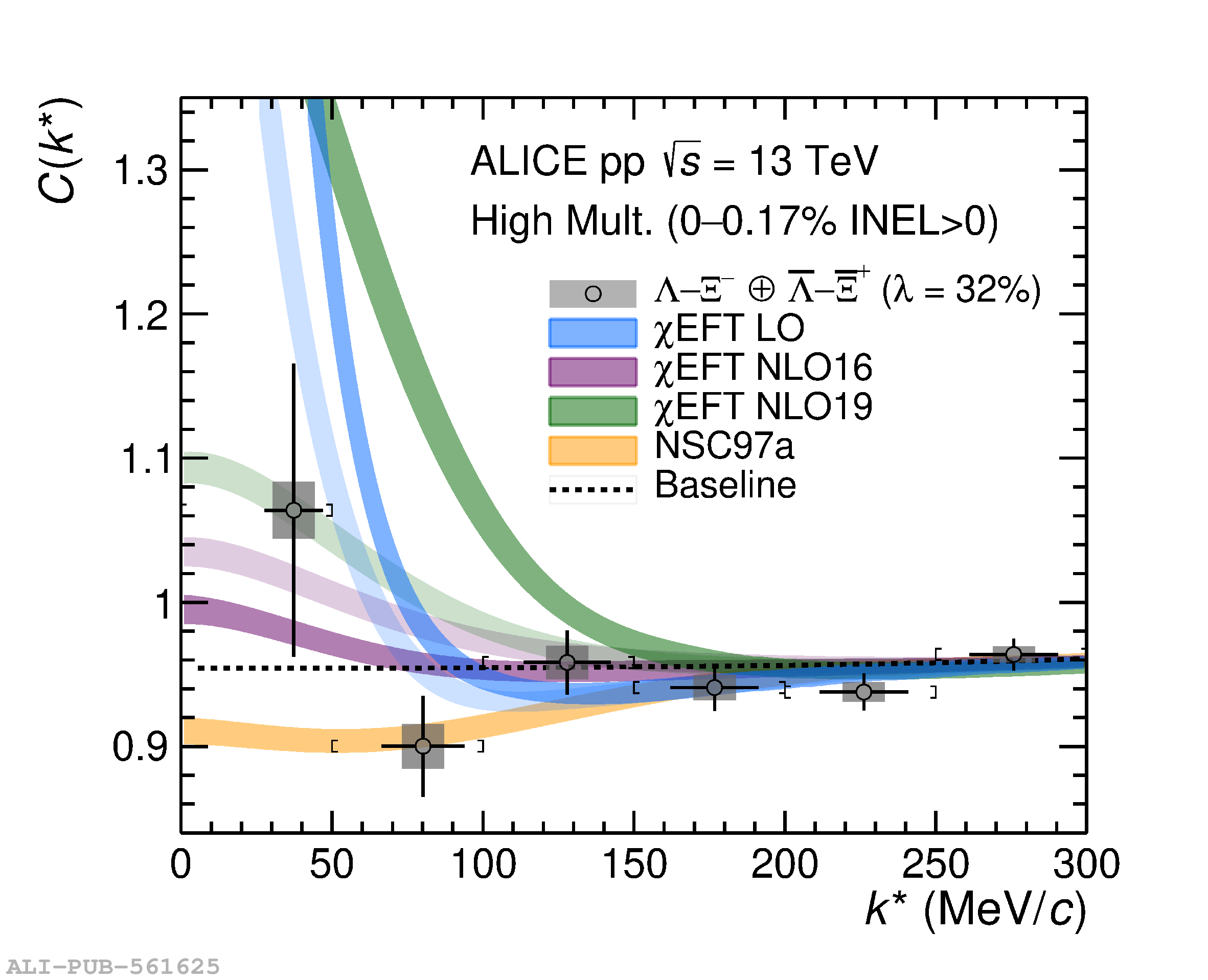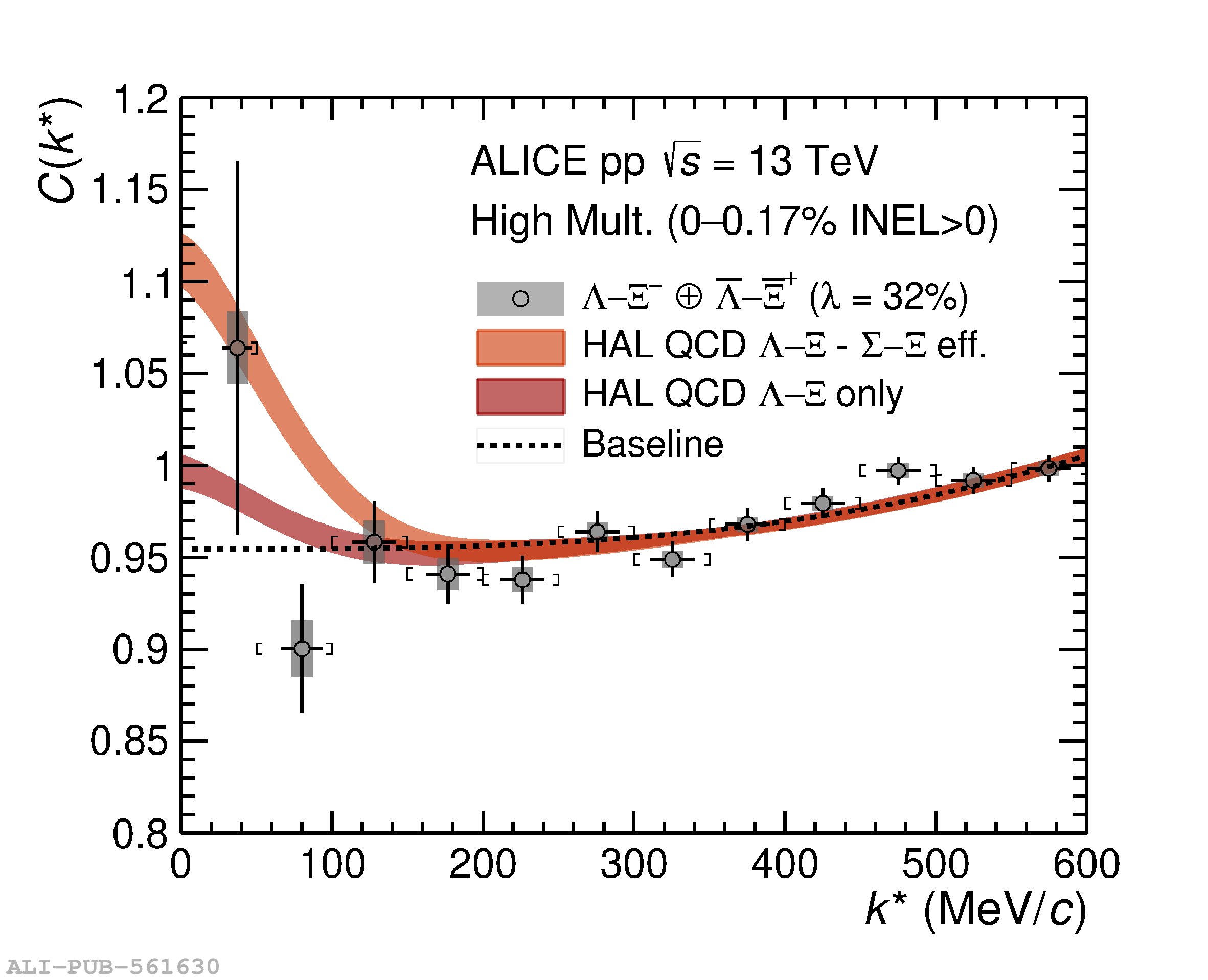The first experimental information on the strong interaction between $\Lambda$ and $\Xi^-$ strange baryons is presented in this Letter. The correlation function of $\Lambda-\Xi^-$ and $\overline{\Lambda}-\overline{\Xi}^{+}$ pairs produced in high-multiplicity proton-proton (pp) collisions at $\sqrt{s}$ = 13 TeV at the LHC is measured as a function of the relative momentum of the pair. The femtoscopy method is used to calculate the correlation function, which is then compared with theoretical expectations obtained using a meson exchange model, chiral effective field theory, and Lattice QCD calculations close to the physical point. Data support predictions of small scattering parameters while discarding versions with large ones, thus suggesting a weak $\Lambda-\Xi^{-}$ interaction. The limited statistical significance of the data does not yet allow one to constrain the effects of coupled channels like $\Sigma-\Xi$ and N$-\Omega$.
Phys. Lett. B 844 (2023) 137223
HEP Data
e-Print: arXiv:2204.10258 | PDF | inSPIRE
Figure group



